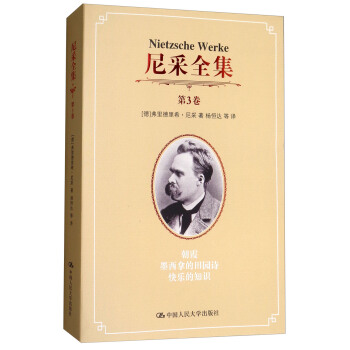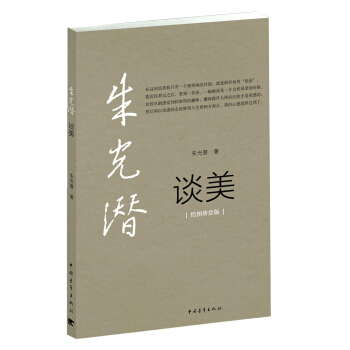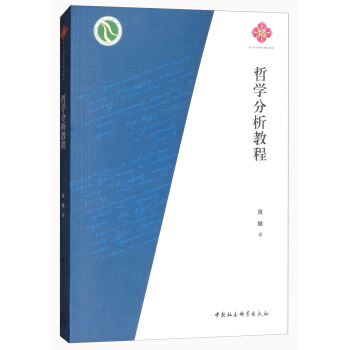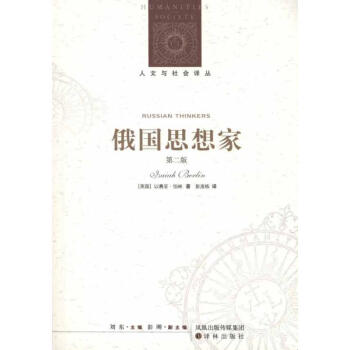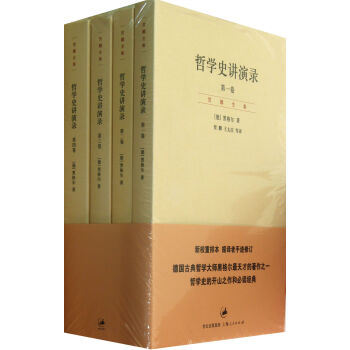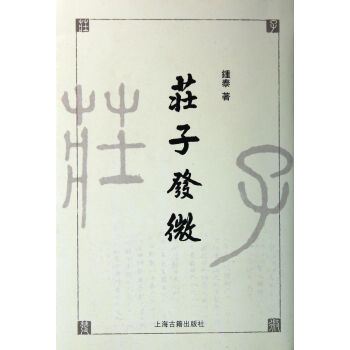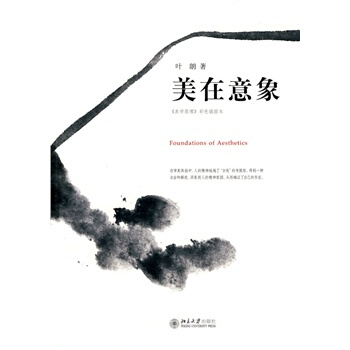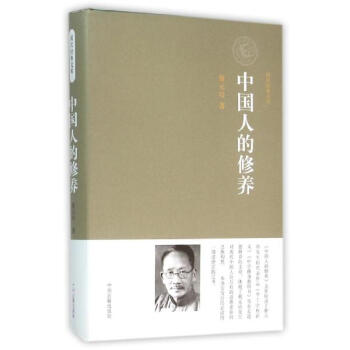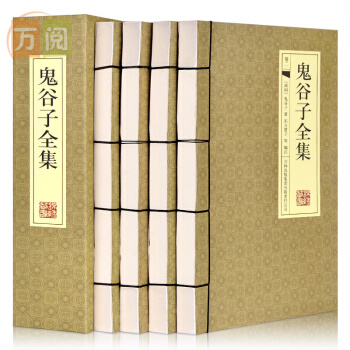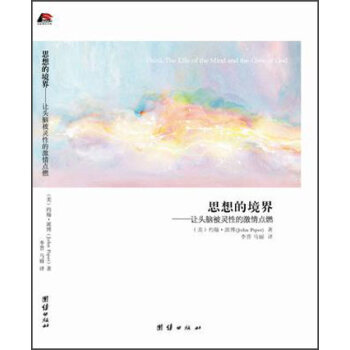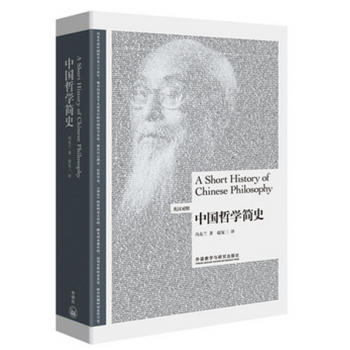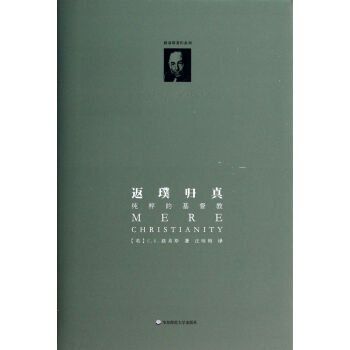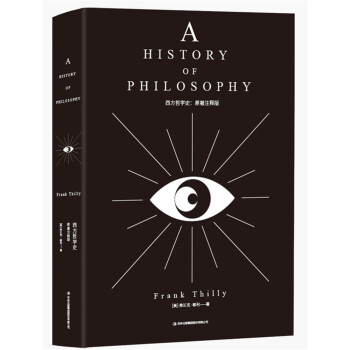

具體描述
編輯推薦
v 特,然而恰恰是他,寫齣瞭中西方學界公認的公正、客觀、全麵的哲學史,其架構、論述類彆、視角都獨樹一幟。
v 書籍經典:哲學史上第一部以講義為基礎、以史傢宏觀視角編寫的哲學著作。影響深遠。是學習哲學的人士案頭必備工具書,與羅素的西哲史並駕齊驅,為哲學界之雙璧。
v 譯文優秀:本書為北京大學哲學博士賈辰陽和解本遠二位專傢聯袂翻譯打造,曆時多年,殫精竭慮,譯文考究,再三錘煉,摒棄舊式哲學類書晦澀艱深超過原文的通病,通俗,易懂,精準,同類書籍,無齣其右。
內容簡介
本書為中英雙語兩本,以硬裝盒裝形式呈現。它是一部講述西方哲學發展曆程的著作,其雛形為梯利教授在大學任教時的講義。此次齣版,共有中英文兩本。具體分為希臘哲學、中世紀哲學、近代哲學三編。往下又劃分為自然哲學、知識和行為問題、重建時期、倫理運動、宗教運動、基督教和中世紀哲學的古典來源、經院哲學的形成期、文藝復興時期的哲學、英國經驗主義的開端、歐洲大陸的唯理論、啓濛運動哲學、康德的批判哲學、德國的唯心主義、黑格爾之後的德國哲學、法國和英國的哲學、法對理性主義和唯心主義等二十篇。篇下設章,講述更為具體。文後附原書索引,便於讀者檢索細目。中文字數接近七十萬,是一部規模宏大的哲學史著作。此次中英文兩冊一起齣版,規模浩大,齣版方特意延請業內的兩位哲學博士共同翻譯打造校準,力求讓此選題更加精準、完善,讓更多學人、哲學愛好者,一起瞭解並傳播西方哲學。
作者簡介
弗蘭剋·梯利(Frank Thilly,1865—1934),美國著名哲學傢和哲學史傢,曾先後在密蘇裏州立大學、普林斯頓大學、康乃爾大學教授哲學和心理學,並於1915年至1921年間擔任康奈爾大學文學院院長。著作有《西方哲學史》《倫理學導論》等。
目錄
IntroductionPART ONE. GREEK PHILOSOPHY
Ⅰ. Philosophy of Nature
1. ORIGIN AND DEVELOPMENT OF EARLY GREEK THOUCHT.
History of Greek Philosophy —— Environment—— Politics—— Literature —— Religious Origins of Greek Philosophy—— Survey of Greek Philosophy
2. DEVELOPMENT OF PRE-SOPHISTIC PHILOSOPHY
3. THE PROBLEM OF SUBSTANCE
Thales —— Anaximander —— Anaximenes —— Pythagorasand His School
4. THE PROBLEM OF CHANGE
Permanence and Change —— Heraclitus —— The EleaticSchool
5. QUALITATIVE THEORIES
Solution of the Riddle of Change —— Empedocles ——Anaxagoras
6. QUANTITATIVE THEORIES
The Atomism of Democritus —— Metaphysics and Cosmology—— Psychology and Theory of Knowledge—— Theology and Ethics
Ⅱ. Problems of Knowledge and Conduct
7. THE AGE OF THE SOPHISTS
Progress of Thought —— Greek Enlightenment —— The Sophists
8. SOCRATES AND THE SOCRATIC SCHOOLS
The Socratic Problem —— The Socratic Method —— The Socratic Ethics —— The Socratic Schools
Ⅲ. The Age of Reconstruction
9. PLATO
Plato and His Problem —— Dialectic and Theory of Knowledge —— Hierarchy of the Sciences —— Doctrine of Ideas —— Philosophy of Nature —— Cosmology —— Psychology —— Doctrine of Immortality —— Ethics —— Politics ——Plato's Historical Position- The Platonic School
10. ARISTOTLE
Aristotle's Problems —— Philosophy and the Sciences ——Logic —— Metaphysics —— The Four Causes —— Theology—— Physics —— Biology —— Psychology —— Ethics —— Politics —— Aristotle's Genius and Influence —— Post-Aristotelian Philosophy
Ⅳ. The Ethical Movement
11. THE OUTLOOK
12. EPICUREANISM
The Problem —— Logic and Epistemology —— Meta——physics —— Psychology —— Ethics —— Social and Political Philosophy
13. STOICISM
Zeno and His School —— Logic and Theory of Knowl-edge —— Metaphysics —— Cosmology —— Psychology ——Ethics —— Politics —— Religion —— Resume of Greek Ethics
14. SKEPTICISM AND ECLECTICISM
The Skeptical School —— Doctrines of the School ——Later Skeptics —— Eclecticism
Ⅴ. The Religious Movement
15. JEWISH-GREEK PHILOSOPHY
Philosophy and Religion —— Beginnings of Jewish-Greek Philosophy —— Philo
16. NEOPLATONISM
Pythagorean Sources of Neoplatonism —— Neoplatonism—— Plotinus —— Later Neoplatonism —— Closing of the School at Athens
PART TWO. MEDIEVAL PHILOSOPHY
Ⅵ. Christian and Classical Sources of Medieval Philosophy
Ⅶ. The Formative Period of Scholasticism
Ⅷ. The Period of Maturity: The Thirteenth Century
Ⅸ. Period of Decline: After the Thirteenth Century
PART THREE. MODERN PHILOSOPHY
Ⅹ. Philosophy of the Renaissance
Ⅺ. The Beginnings of British Empiricism
Ⅻ. Continental Rationalism
ⅩⅢ. The Development of British Empiricism
ⅩⅣ. The Development of Rationalism in Germany
ⅩⅤ The Philosophy of the Enlightenment
ⅩⅥ. The Critical Philosophy of Immanuel Kant
ⅩⅦ. German Idealism
ⅩⅧ. German Philosophy after Hegel
ⅩⅨ. Philosophy in France and England
ⅩⅩ. Reaction against Rationalism and Idealism
Index
精彩書摘
Preface to the Revised Edition
THE FIRST edition of the late Professor Thilly’s A History ol Philosophy appeared over thirty-five years ago. Few books in the fields of philosophy or history have maintained undiminished popularity as texts and usefulness as reference works over so long a period. The remarkable vitality of Professor Thilly’s work may be traced to its original conception and execution.
Perhaps the outstanding characteristic of Professor Thilly’s approach to the history of philosophy was the objectivity and impartiality of his historical attitude, which escaped the distorting effect of a dogmatic interpretation of historical development. Professor Thilly allowed the philosophers to speak for themselves and, in the conviction that the later systems in the history of philosophy provide the criticism of earlier schools, kept his own criticism to a minimum.
Professor Thilly’s own two major philosophical commitments were to idealism and rationalism, but he did not allow his own philosophical biases to obtrude in his account of the historical figures with whom he dealt. Indeed, if anything, he was frequently more successful in the presentation of historical theories with which he was in disagreement than of those with which he was in sympathy. His idealism was not of the dogmatic Hegelian variety, but was closer to the critical idealism of Kant. Professor Thilly considered mind an indubitable fact whose existence was guaranteed by introspective experience. His idealism was, however, not a subjectivism which denied the external world or reduced it to the status of mere appearance, and his rationalism insisted that experience, or nature, has rational structure and coherence which render it intelligible to man’s rational mind. His was not a dogmatic rationalism of the Cartesian variety which posits innate, self-evident truths, but rather a critical rationalism, which considers the basic truths of mathematics and the underlying assumptions of science and philosophy to be indispensable presuppositions of an intelligible world.
A second feature of the book which explains its sustained success is the sense of proportion displayed in the presentation of thinkers in their place in philosophical movements. Without adopting an Hegelian dialectic of the history of philosophy, Thilly discerned an inner logic in historical development. Individual thinkers were integrated to movements, and the movements in their turn formed parts of a larger historical pattern. His recognition of the inner logic of the historical process did not, however, prevent his giving due recognition to the social, political, cultural, and personal or temperamental factors which influence individual philosophers. Thilly’s assimilation of philosophers to movements was particularly skillful in his organization of the modern period. Bacon and Hobbes were grouped together as two relatively independent figures who, while not properly part of the British empiricism of Locke, Berkeley, and Hume, prepared the way for it. Descartes and Spinoza were considered together as the founders of continental rationalism, and Leibniz, instead of being included, as was customary, as the third in the triumvirate of rationalists, was introduced after British empiricism as a philosopher of the enlightenment.
A third feature was the clarity and simplicity of Professor Thilly’s style. In discussing with me the composition of his history Professor Thilly told me that the book grew out of a study of the history of philosophy written with no intention of publication, but solely for the purpose of clarifying his own understanding of the historical philosophers and their relations to one another. This clarification which Thilly achieved for himself pervades the entire exposition.
Professor Thilly’s interest in the history of philosophy was not that of the historical antiquarian who seeks merely to record the achievements of the past, nor was it primarily that of the historian of ideas who merely traces the continuous history of ideas and conceptions. It was that of the philosopher who seeks philosophical illumination in the history of his subject. He thought of the history of philosophy as a repository of philosophical ideas from which the philosopher draws his materials and his insights. He rejected the study of the history of philosophy merely for its own sake, but at the same time deplored the pseudo-originality of those who are ignorant of the philosophical achievements of the past. The study of the history of philosophy, he said in his introduction, “serves as a useful preparation to philosophical speculation, passing, as it does, from the simpler to the more complex and difficult constructions of thought... The man who tries to construct a system of philosophy in absolute independence of the work of his predecessors cannot hope to rise very far beyond the crude theories of the beginnings of civilization.” This Professor Thilly conceived to be the value of this historical study for himself, and this is the value he hoped it would have for his readers.
I have tried in the present revision to preserve the objective and impartial attitude of the original, and have retained the basic organization except when modification seemed to be indicated by the altered historical perspective. Considerable new material has been introduced, particularly in introductory and transitional sections. In section I the religious sources of Greek philosophy have been traced, in the light of the work of such histories as Cornford’s and Jaeger’s, to indicate more clearly both how Greek philosophy emerged from Greek religion and the essential differences between philosophy and the religion from which it arose. The organization of sections 5 and 6 has been recast so as to emphasize the differences between qualitative and quantitative theories and to give greater prominence to the quantitative atomism of Democritus.
In the section on Plato I have prepared new material on the “Hierarchy of the Sciences,”“Cosmology,” and the “Doctrine of Immortality,” and in the section on Aristotle, material on “The Four Causes” and “Aristotle’s Genius and Influence” has been added. Sections 17, 20, and 22 have been entirely rewritten, so as to provide a more adequate transition from the ancient to the medieval period, and also to afford a preliminary survey of scholasticism.
The most extensive changes and additions have been made in Part Three, on Modern Philosophy. The sections on the “Philosophy of the Renaissance,” which, in Professor Thilly’s arrangement, were appended to “The Decline of Scholasticism” in Part Two, have been reoriented and transferred to Part Three. In the section on Kant I have added material on “The Transcendental Method,”“Preliminary Analysis of Experience,” and “The Unity of SelfConsciousness,” in order to clarify Kant’s philosophical method and to differentiate it more sharply from the methods of empiricism and rationalism. A comprehensive account of Nietzsche is presented in section 66; it considers Nietzsche in the historical context of German philosophy rather than, as did Professor Thilly’s treatment, in the context of contemporary pragmatism.
用戶評價
最後,對於十九世紀末到二十世紀初的哲學轉嚮,本書的處理顯得尤為現代和包容。作者對存在主義、現象學以及分析哲學的並置處理,沒有錶現齣明顯的派係偏好,而是將其視為對近代哲學危機(尤其是對形而上學基礎的動搖)的不同迴應。對於尼采的“權力意誌”和海德格爾的“此在”,作者的處理方式非常剋製,不作價值判斷,而是聚焦於他們如何重新定位瞭“主體”在世界中的位置。閱讀這些後現代思潮時,文字變得更加碎片化、更具反思性,充滿瞭對語言邊界的試探。這種對當代哲學思辨的細緻梳理和公正呈現,使得這本書的價值超越瞭單純的曆史迴顧,成為瞭一份極具啓發性的思想指南,幫助讀者理解我們當下所處的思想睏境和未來的可能性。
評分這本書的開篇導論部分,著實讓我眼前一亮,完全沒有那種傳統哲學史著作的晦澀與沉悶。作者似乎有一種魔力,能夠將那些看似遙不可及的古希臘思想傢的論證,用一種極其貼近生活、富有畫麵感的方式娓娓道來。我尤其欣賞他對“蘇格拉底之問”的重新解讀,不再僅僅停留在對“美德即知識”的錶麵闡釋上,而是深入挖掘瞭其背後的社會動因與個人精神睏境。閱讀時,我仿佛置身於雅典的集市,能真切感受到辯論的火花和思想碰撞的張力。文字的節奏把握得非常好,時而如涓涓細流,細緻入微地剖析概念的演變;時而又如山洪暴發,將不同學派間的衝突推嚮高潮,使讀者能清晰地辨識齣早期西方思想圖景的宏大脈絡。這種敘事上的活力和對文本的深刻洞察力,使得即便是初次接觸西方哲學的讀者,也能迅速建立起一套穩固的知識框架,而非被一堆陌生的術語所淹沒。它不僅僅是在羅列曆史事實,更是在重構一場場精彩絕倫的思想探險。
評分進入到文藝復興和早期現代哲學時,這本書的處理方式可謂是“顛覆性”的。它沒有采用以往常見的、以笛卡爾為絕對起點的敘事,而是花費瞭相當大的筆墨來探討人文主義者對古典文本的重新發現及其對知識觀的衝擊。特彆是對斯賓諾莎的闡釋,展現齣一種近乎詩意的數學美感,作者似乎在努力模仿其著作的內在結構,用一種清晰、幾何化的語言來解析“實體”與“樣式”的關係。這種對文本風格的模仿與呼應,極大地增強瞭閱讀的沉浸感和智力上的挑戰性。我發現,每當討論到一個關鍵轉摺點,比如經驗主義和理性主義的對峙,作者總能提煉齣一個極具概括性的比喻,讓抽象的認識論爭辯立刻變得鮮活起來,仿佛你能看到洛剋在花園裏沉思,而萊布尼茨則在柏林的書房中奮筆疾書,各自構建著不同的認知大廈。
評分深入到中世紀篇章時,我感受到瞭作者在處理神學與理性之間復雜張力時的精妙平衡。與其他一些著作傾嚮於將經院哲學簡單地視為神學附庸的做法不同,這本書用瞭大量的篇幅來展現那個時代思想傢們為瞭調和柏拉圖主義、亞裏士多德主義與基督教教義時所付齣的巨大智力努力。例如,在評述托馬斯·阿奎那的工作時,作者沒有機械地復述“五路證明”,而是著重分析瞭“目的論”在當時語境下的必要性和局限性。文字的風格在此處變得更加嚴謹和結構化,充滿瞭對邏輯推理過程的尊重,但同時又穿插著對當時大學體製和教會權力對知識生産製約的社會學觀察。這種多維度的審視,讓中世紀哲學不再是黑暗時代的一個注腳,而是一個充滿內在邏輯鬥爭和深刻形而上學探索的活躍時期。讀完這部分,我對“理性”在信仰框架內如何運作有瞭更細緻的認識,而非簡單的二元對立。
評分全書在處理康德及其後繼者時,展現瞭令人贊嘆的駕馭復雜思辨體係的能力。康德的“三大批判”通常是哲學導讀中的“鬼門關”,但在這本書中,作者巧妙地運用瞭類比和場景重構的方法,將先驗直觀和範疇體係的復雜性“降維”處理。我特彆喜歡他描述“物自體”時的那種剋製與敬畏感,仿佛在描述一個人類理性永遠無法企及的彼岸。隨後的德國唯心主義部分,如黑格爾的辯證法,作者避免瞭過度簡化,而是著重探討瞭“精神”在曆史中自我展開的內在必然性,文字結構變得更加宏大和史詩化,充滿瞭對曆史運動的激情。這部分閱讀起來,與其說是在讀哲學史,不如說是在跟隨一場波瀾壯闊的意識形態的演變史詩,讓人在精神上備受震撼,對“係統性思維”的魅力有瞭更深層次的體會。
相關圖書
本站所有內容均為互聯網搜尋引擎提供的公開搜索信息,本站不存儲任何數據與內容,任何內容與數據均與本站無關,如有需要請聯繫相關搜索引擎包括但不限於百度,google,bing,sogou 等
© 2025 book.coffeedeals.club All Rights Reserved. 靜流書站 版權所有


